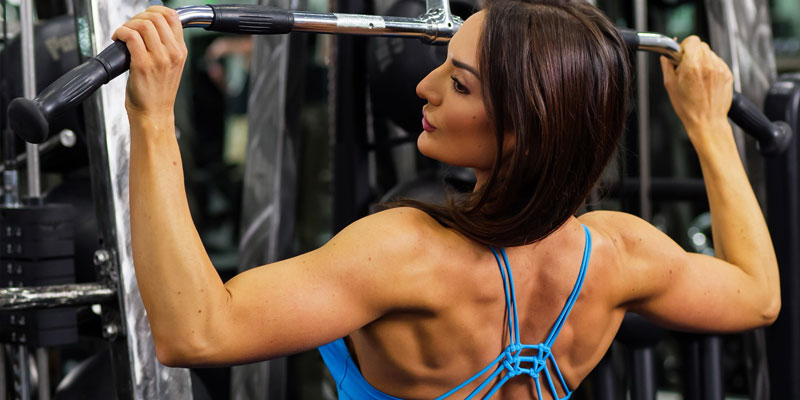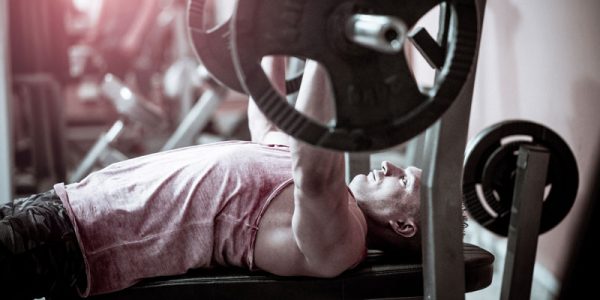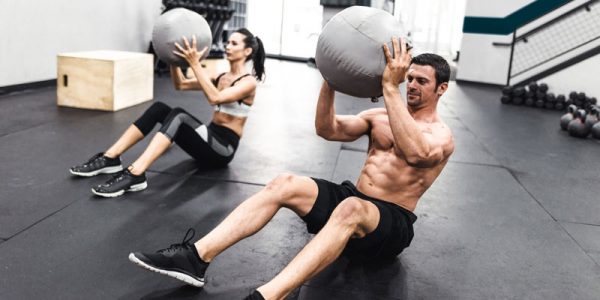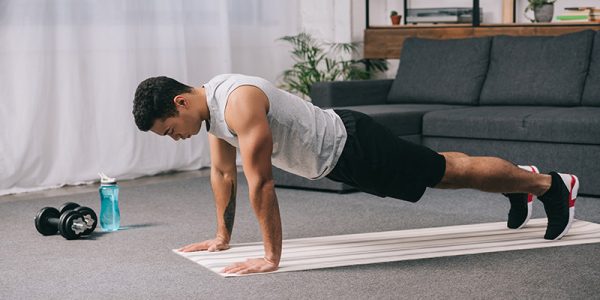In order to improve the quality of your life and reduce the risk of numerous diseases, the American College of Sports Medicine (ACSM) recommends performing resistance training two to three times per week with 8 to 12 repetitions of 8 to 10 exercises that target all the major muscle groups. However, the Centers for Disease Control and Prevention (CDC) reported that only about 20% of women were engaging in resistance training two or more times per week.
That means that almost 80% of women are missing out on the key physiological benefits of resistance exercise, which includes improved communication between their brain and muscle, enhanced bone, muscle, and connective tissue growth and durability, and increased strength, endurance, muscle, and power.
A study of over 35,000 healthy women published by Medicine & Science in Sports & Exercisefound that compared with women who reported no strength training, women engaging in any strength training experienced a reduced rate of type 2 diabetes of 30% and a risk reduction of 17% for cardiovascular disease. Weight lifting can also help manage and treat many conditions ranging from arthritis to depression, and also helps with blood glucose regulation and aerobic fitness.
Since weight lifting has so many benefits for women, this begs the question: Why aren’t more women lifting weights? It may have something to do with the myths out there regarding strength training and weight lifting for women.
MYTHS ABOUT STRENGTH TRAINING & WEIGHT LIFTING FOR WOMEN
Myth #1: Lifting Heavy Weights Will Make Women Bulk Up
“Females may be socialized at a young age to avoid perceived ‘masculine’ areas (e.g., weight rooms) and are likely encouraged to pursue activities perceived as more ‘feminine’ (e.g., dance aerobics),” according to a scholarly article in the International Journal of Exercise Science. “A strong gender-based stigma also still exists for resistance training, as many women report concerns that they would ‘bulk up’ or look ‘manly’ if they participated in ongoing resistance training.”
While some people may think that women will bulk up if they lift weights, they’re just flat out wrong. It’s a physical impossibility for women to ‘look like a man’ with normal weight training because women don’t have enough testosterone to build big muscles.
“Women typically don’t develop big muscles from strength training because, compared to men, women have 10 to 30 times less of the hormones that causes muscle hypertrophy,” according to Verywell Fit. “Weight training does not make you bulky; excess body fat does.”
For a woman to get to a body-builder level of muscularity, she’d have to diet and train in an extreme fashion to achieve that goal, and then keep at it for years. It’s not like she’s going to go to the gym one day, lift weights, and then wake up the next morning with massive, bulging muscles.
Myth #2: If Women Want To Lose Weight They Should Only Do Cardio At The Gym
The International Journal of Exercise Science article also acknowledged that another potential obstacle for women when it comes to weight lifting is that a general tendency of many women is to spend the majority of their exercise time using cardiovascular machines rather than lifting weights, “perhaps believing that cardiovascular exercise results in more benefits to health and/or body appearance.” This is backed up by research that found that roughly 70% of patrons using cardiovascular machines in fitness centers tended to be female.
“A cardio workout burns more calories than a weight-training workout,” according to Healthline. “However, your metabolism may stay elevated for longer after weights than cardio, and weight lifting is better for building muscle. Thus, the ideal exercise program for improving body composition and health includes cardio and weights.”
AREAS FOR WOMEN TO FOCUS ON WHEN WEIGHT LIFTING
Body Recomposition
Body Recomposition or body recomp is an exercise and nutrition regimen that emphasizes the importance of gaining muscle and losing fat at the same time. This process changes your body composition, which is the amount of fat and fat-free mass (muscle, bone, and water) your body contains, and is an important factor of how healthy and fit you are.
That’s why many fitness professionals believe people should focus more on body recomp, and less on trying to lose weight based only on a number that a scale is showing. In fact, trainer, fitness model, and Team MuscleTech member Giuliana Ava shared with MuscleTech.com.au that she recommends her clients take photos of themselves at the beginning of their fitness journeys and then continue taking photos, possibly even weekly, so they can monitor and track their progress along the way.
“I think pictures are the biggest thing. I don’t believe in the scale,” Giuliana Ava says. “With losing fat and adding muscle, some people are like, ‘The number on my scale is the same, but I look better.’ And I’ll say, ‘Exactly. The number on the scale doesn’t mean sh*t! It’s just the relationship between you and gravity and I don’t believe in it.”
By focusing on body recomp rather than the scale, Giuliana Ava says that people are usually more motivated, and may even get addicted to the results once they start seeing the differences.
Train For The Results YOU Want
Instead of worrying about what people may or may not think about the way you look, focus on your personal health and fitness goals and make it your mission to accomplish them. That’s exactly what Giuliana Ava did. Not because she was thinking about her future as a fitness model and a trainer, but because that’s what lit her up inside.
“Back in 2016, that was probably my breakout year on Instagram and social media. I’m petite. I’m only 5’2 and I was weighing in at about 140 to 145 pounds, but I was pulling and pushing trucks. I was training as if I was going to the combine. I was really doing things that girls my size weren’t doing at the time,” Giuliana Ava says. “Although I’ve never competed on the stage in physique or bikini competitions, I look to those types of athletes, to those girls and use them as motivation. I always want to see how far I can push my body. So, I would switch up my workouts, my diet, my training style, and I would try to completely transform my body. When I saw that I was able to get down to 117 pounds with shredded abs, I was like, ‘Wow, I have full control over me.’ And that’s the biggest thing. I can control what I can control in life.”
Embrace Progressive Overload Training
While Giuliana Ava was pulling and pushing trucks as part of her strength training regimen, we don’t recommend that you start your strength training and weight lifting journey by doing that. It’s important to build up gradually.
That’s why you should embrace progressive overload training, which is when you gradually increase the weight, frequency, and repetitions in your strength training routine. This method will challenge your body and allow your musculoskeletal system to get stronger. Over time, chances are that you’ll notice yourself feeling fitter and stronger, which is exactly the goal.








